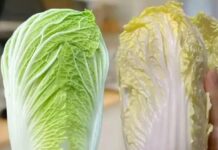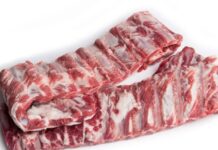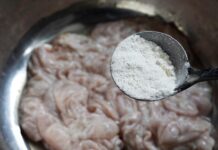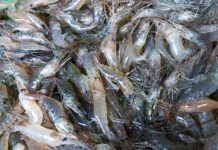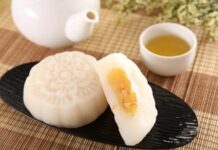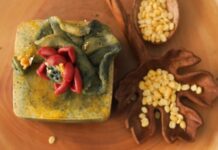
At first glance, the skink might be mistaken for a lizard or a gecko due to its peculiar appearance. Belonging to the Scincidae family, skinks have slender bodies with four small legs, each with five toes. Their most distinctive feature is their glossy black scales and two red stripes running along their flanks from head to hind legs. Skinks have pointed snouts resembling those of snakes, often startling onlookers as they scurry through dry leaves.
The name “skink” derives from their unique hunting behavior. Their favorite prey is termites, which live in colonies within decaying tree trunks or dry grass. Skilfully utilizing their tongues and acute sense of smell, skinks effortlessly locate their prey in these ideal habitats. They are most active during November and December, when dry grass and decaying wood become infested with termites. In addition to termites, skinks also feed on a variety of small insects such as crickets, cockroaches, grasshoppers, and beetles.
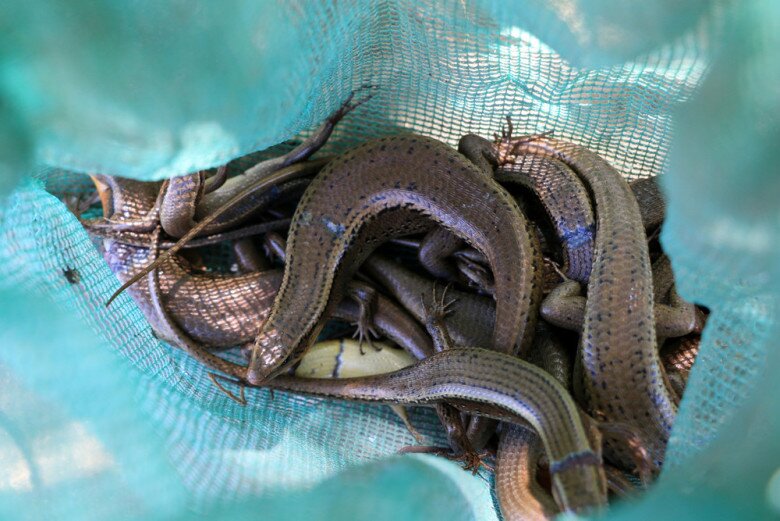
Skinks were once considered a humble delicacy, commonly featured in the simple meals of the Mekong Delta locals. Catching skinks became a familiar pastime for locals, especially children, during summer afternoons. Skink meat, known for its delicious flavor and high nutritional value, has inspired numerous unique dishes.
Contrary to their unassuming appearance, skinks are highly prized for their meat. Their meat is white, tender, and sweet, with low fat content but rich in protein, vitamins, and minerals. Locals have creatively incorporated skink meat into various dishes, reflecting the distinctive culinary culture of Southern Vietnam. One of the simplest yet most flavorful preparations is grilled skink, where the skinks are cleaned and directly grilled over charcoal, resulting in a dish with tender, sweet meat and a distinctive aroma. This dish is typically served with chili lime salt or tamarind fish sauce, creating a harmonious blend of sweet, sour, and spicy flavors.
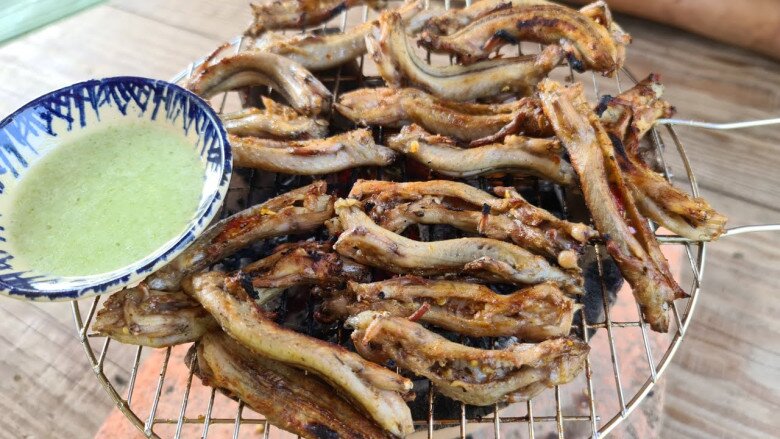
Another mouthwatering dish is stir-fried skink with lemongrass and chili. This dish combines the spicy kick of chili with the aromatic fragrance of lemongrass and the natural sweetness of skink meat, making it a perfect choice for family gatherings or get-togethers with friends.
Skinks are also used in a variety of other dishes, such as minced skink patties, skink stuffed pancakes, and skink porridge. Skink porridge, in particular, is considered a nutritious dish, especially beneficial for the elderly, convalescents, and undernourished children.
The culinary and nutritional value of skinks has been recognized, elevating them from a humble delicacy to a premium specialty. Today, skinks are featured on the menus of upscale restaurants and eateries, commanding prices as high as a few hundred thousand dong per kilogram, a far cry from their modest beginnings just a few years ago.
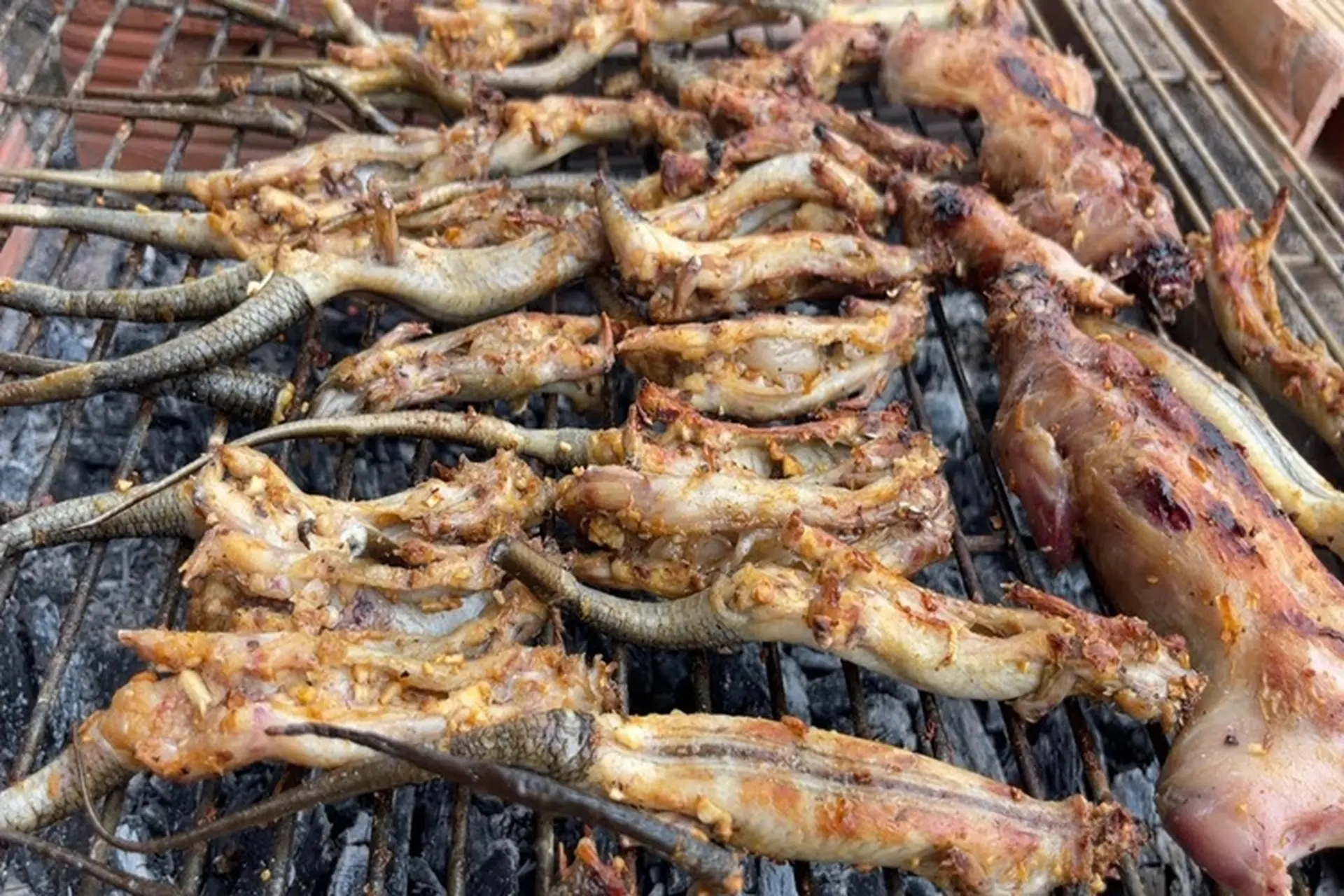
The transformation of skinks from a rural delicacy to a specialty has not only enhanced their value but also opened up new economic opportunities for rural residents, especially in the Mekong Delta region. Over the years, skink farming has emerged as a successful model for poverty alleviation, helping numerous households escape poverty and achieve a stable livelihood.
Skinks are easy to breed, requiring low initial investment and offering high economic returns. They reproduce quickly, have low disease rates, and their primary food source consists of readily available insects such as crickets, cockroaches, and beetles, or commercial feed. Each year, a skink-farming household can sell thousands of skink offspring or tons of skink meat to the market.
The market price for skink meat ranges from 200,000 to 350,000 VND per kilogram, while skink offspring fetch prices between 15,000 and 30,000 VND each. With these prices, households can earn a stable monthly income of 15 to 25 million VND. This model not only utilizes idle labor but also generates a sustainable source of income, contributing to the overall economic development of the region.
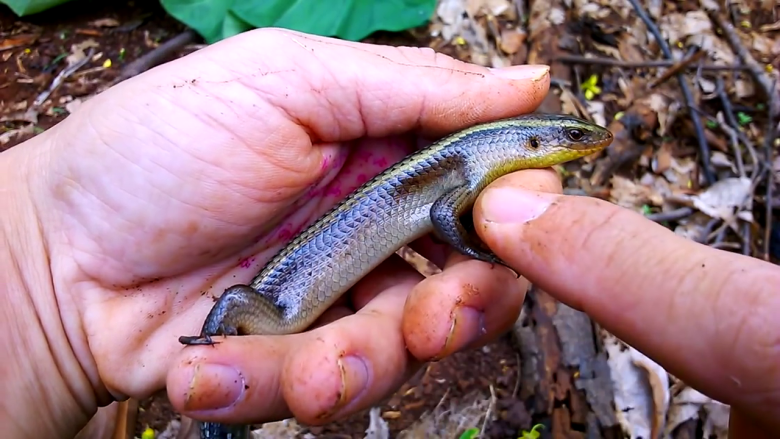
According to folk knowledge and preliminary studies, skink meat is not only delicious but also highly nutritious. Its high protein and low-fat content make it a healthy choice for various diets. Additionally, skink meat contains a variety of essential vitamins and minerals, providing nourishment and promoting overall health.
People in the Mekong Delta believe that skink meat helps strengthen the spleen and improve digestion, reduces fatigue, and is especially beneficial for the elderly. Skink porridge is often used as a traditional remedy to nourish and strengthen those who are debilitated or have difficulty gaining weight.
The development of skink farming not only meets the growing demand for this delicacy but also helps reduce the pressure on natural resources and protects indigenous species. The story of skinks showcases the ingenuity and creativity of the Vietnamese people in harnessing natural resources for economic development while preserving traditional cultural values. From a familiar reptile, skinks have become a new culinary and economic symbol, bringing prosperity to the people of the Mekong Delta.












